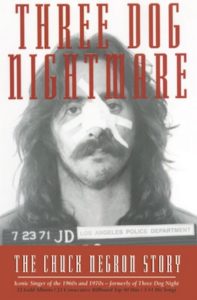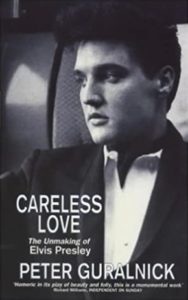Telling it straight
by Brett Marie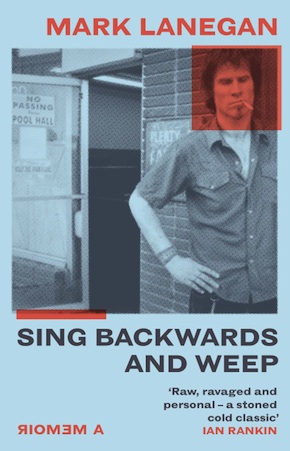
“Mark Lanegan writes like he sings, from the pained heart of a damaged soul with brutal honesty.” Bobby Gillespie
In dark times, it’s only natural for readers to seek an escape. So it’s no surprise that, to fill the tedium of society-wide lockdown in the darkest, saddest days I’ve witnessed since 9/11, many friends of mine have wiped their reading lists clean of brave and hard-hitting ‘literary’ fiction in favour of lighter genre fare. While I am no exception, my escapist genre of choice falls a bit outside the mainstream. Pick a Jack Reacher thriller off the shelf, and you might find a dozen takers online to read along with you. But I have yet to see anyone tweet out, “Who can suggest a good rock-star drug memoir?”
This reading niche might be highly specific, but its bibliography is by no means small. From manager/addict Danny Sugarman to rock titans Duff McKagan, Nikki Sixx and Anthony Kiedis, it seems everyone in the performing arts who’s clawed their way out of the rabbit-hole of drugs and alcohol has reached for a pen before scraping the dirt from under their fingernails.
And wouldn’t you know it, right when I need it most, out comes a fine addition to the oeuvre to provide me with my, ahem, fix. Singer/songwriter Mark Lanegan has enjoyed both critical and commercial success over the three decades since he and his band Screaming Trees helped launch a musical revolution out of the Pacific Northwest. Somewhat less successful during the first part of his career was his years-long marathon of heroin and crack-cocaine use. With the benefit of distance, Lanegan has chosen now to reflect back on those early days, in both his latest album Straight Songs of Sorrow, and his new memoir Sing Backwards and Weep.
Perhaps ‘reflect’ is too tame a word for this, though, at least to judge from the book’s opening paragraphs:
“POLICE.”
At first his warning didn’t register, my mind fixated on the pinprick ending of the morning’s routine, the relief from what at this point was only a dull, aching pain.
“Police,” the African cab driver whispered again in a thick accent while motioning with a roll of the eyes and quick hunch of his shoulders to look in the rearview mirror where, sure enough, the three young guys following in the van behind looked like undercover cops, eager to beat someone’s ass. Maybe mine.
This isn’t an original way to start one of these things, though few have done it so well. The set-up to these stories almost never varies. After a nail-biter of a prologue showcasing a close brush with death or the law at the height of the author’s fame and/or addiction, we rewind to his upbringing, some aspect of which forms the basis for future drug use. And on this, Sing Backwards and Weep doesn’t disappoint. Born dirt-poor in the “culturally isolated cow town” of Ellensburg, in north-eastern Washington State, Mark Lanegan spends his youth collecting scars, both physical and emotional, from an array of sources: an abusive mother and a largely absentee, alcoholic father; a hot temper and a penchant for petty crime; and a burgeoning interest in the wrong kind of biochemistry.
Lanegan’s single-minded focus as he becomes an adult is on getting his freedom. “From my earliest memories,” he writes, “I had hated this dead-end redneck town, hated the ignorant right-wing, white-trash hay farmers and cattlemen talking constantly about the weather, hated the constant battering wind that blew the putrid smell of cow shit everywhere. I knew there was a world outside waiting for me.” He finds his ticket out with the rise of the band he co-founds, Screaming Trees, who find moderate fame as a prototype for the army of garage bands who will eventually swarm out of Seattle and dominate the music industry for half a decade. Lanegan’s feelings for the band are mixed at best (Trees songwriter/guitarist Lee Conner is the book’s biggest rhetorical punchbag), but they are a means to an end, and along with freedom of movement comes an introduction into a wider world of music, sex, and drugs.
What really keeps the pages turning is the tension between the author’s quest for musical greatness and his appetite for self-medication… his growing, metastasizing addiction will soon outweigh everything else.”
As the Trees play their way around the United States and then the world, his rooster-on-Viagra pursuit of sex makes for a few eye-opening scenes, but as drug-memoir convention dictates, what really keeps the pages turning is the tension between the author’s quest for musical greatness and his appetite for self-medication, in Lanegan’s case with heroin and crack cocaine. It goes without saying that while our hero will manage to rack up some work of lasting artistic value (he’s justifiably proud of the Trees’ breakout Sweet Oblivion and his landmark solo album Whiskey for the Holy Ghost), his growing, metastasizing addiction will soon outweigh everything else.
What follows is a years-long, Herculean juggling act between music and drugs, with the stakes climbing ever higher as our hero’s addiction wraps its tentacles around his brain. Lanegan will jet around the world, singing on festival stages and TV talk shows, prowling for drug connections in the dark quarters of more international cities than a James Bond box-set can hold, nearly destroying his body and mind in the service of the monkey on his back. It makes for a harrowing epic, a thriller if I ever read one.
Lanegan’s tale charts the common course, making all the usual stops, but the lyricist’s flair he applies to its best passages elevates the book from the level of hackneyed retreads. Using the same dynamic range that could encompass both ‘Shadow of the Season’ and ‘The River Rise’, he’s able to dial himself up in moments of rage, sink us chin-deep into his sorrow at the loss of good friends (notably with the heartbreaking angle he has on the suicide of Kurt Cobain), and crank the tension into a tightly wound ball when the dope-sickness sets in and the chase for a fix is on. The guy spins a hell of a yarn, and for over three hundred pages I enjoy the strange, sublime paradox of escapist literature: I am grateful at once for the rush of adrenaline as Lanegan’s vivid evocations drag me through his daily junkie gauntlet, and for the fact that in body I’m in boring old lockdown limbo, a galaxy away from the world he paints in my mind.
But with every page I turn, something seeps in to dilute the exhilaration. Naturally, as with any thriller, though some fraught passages leave me out of breath (take a multi-city quest for a fix on a European tour, which shoves my heart into my mouth the way the ‘get-the-antidote’ opening of Indiana Jones and the Temple of Doom did), the hero’s fate is never in doubt. Lanegan’s story is a stand-out for its deep dives into the industry that served up Seattle’s musical smorgasbord to the world, for his opinions on his own and other artists’ music, and for all of the other points of view that could only come from him. But all of this dressing is hung on familiar scaffolding, and there are points when that frame peeks through.
The question, What comes next? rears its head whenever I get to the back of one of these memoirs. But it’s only this time that it lingers long after I close the book.”
Sing Backwards fits perfectly into the canon of rock drug memoirs, in part because of its religious adherence to the genre’s conventions: Lanegan will reach his darkest point, somehow find the strength to defeat the demon of addiction, and be reborn into sobriety. Curtain down. It’s a beautiful narrative arc, and it’s no wonder that just about every book of the genre follows it. Come to think of it, the formula isn’t genre- or even literature-specific. As anyone who’s ever gone to the movies will tell you, your script needs a Good Guy, who’s going to have to jump through some hoops set up by the Bad Guy to get the thing he’s been wanting since Page One. But redemption will only come at the end, when at the crucial moment he digs deep and finds the strength or wisdom to do what no one ever thought possible. Hollywood rules dictate that once you hit that high note (what the writer/illustrator Howard Tayler calls the ‘stand-up-and-cheer moment), you get out. And that’s just what Lanegan does.
Which is where my unease creeps in. Lanegan’s great turning point happened over twenty years ago. His recovery has almost certainly been more hard-won than his two-page epilogue suggests (though he does end, wisely, on a poignant note, as the disease of addiction he’s fought off delivers a parting shot), and, perhaps predictably, I’m left wondering how this new battle to stay clean has played out.
The question, What comes next? rears its head whenever I get to the back of one of these memoirs. But it’s only this time that it lingers long after I close the book. I can’t quite say why, but I soon find myself googling, reading articles, reaching out online to anyone I can think of to answer.
The first place to look is obvious. One book of the genre does go the distance. Three Dog Nightmare follows the long, sordid story of Chuck Negron, one third of the powerhouse vocal trio that fronted Three Dog Night from the late sixties through the seventies. Negron flamed out of Three Dog Night in a blaze of heroin addiction that lasted into the early nineties. That he survived was only the beginning of the miracle of Negron’s life, and when journalist Chris Blatchford took on the task of interviewing Negron to put the story on paper, he saw an opportunity that others have not. Three Dog Nightmare‘s great detox redemption is as powerful as they come, but the four chapters that chart Negron’s ongoing recovery, facing pain, guilt and temptation, solidify that redemption into something lasting, in a way that a few brief, valedictory paragraphs can’t.
I find Blatchford online and ask him about this structural choice. “I was a news reporter for 45 years,” he tells me, “and I always tried to end stories with a strong message or thought. I also sought to do that with the book.” His wisdom about the subject comes from experience: “I grew up with an alcoholic father so I was plugged into the selfishness, cruelty, and waste that addiction brings to a person and a family.”
Three Dog Nightmare manages to give at least some clue to the complexities of life after addiction. So why don’t more memoirs try that tack? Is it perhaps even irresponsible of a writer like Lanegan to gloss over twenty years of recovery, for the sake of a tidy ending? I start to wonder what the standard get-wasted-get-clean storyline looks like to someone living in the get-wasted-get-clean world.
Dave Marlon, who runs CrossRoads of Southern Nevada, the state’s largest drug and alcohol addiction rehab centre, seems nonplussed when I ask him about the value of these stories: “I have helped over 5,000 people get clean and sober in Sin City Las Vegas and I don’t recall a single person who got clean by reading a book (sans 12-step or spiritual books like the Bible).” And as for whether sensational stories of an addict’s crazy days do anyone any good, he explains: “In recovery we use a general rule of splitting our story into three parts, What it was like, What happened, and What it’s like now. We generally strive for equal playtime for all three chapters. We often urge people not to romance the What it was like and instead portray the beauty of life in recovery.”
I need addiction to be the nemesis, and music to be the saviour. Drugs are the dragon. Music is the sword to kill it with. That truth fuels all of the narratives that inspire me.”
The response is a mixed bag when I put the question to a handful of recovering addicts. Former poly-drug user Anne toes Marlon’s line: “No book I read actually inspired me to get or stay clean.” I find it interesting, though, that she adds that when she quit, “part of my approach to sobriety was to read anything and everything on drugs and addiction, from scientific journal articles to law enforcement propaganda. Autobiographies and such were in the mix. It all helped to create a fair understanding of what I was going through.”
Ryan, a recovering heroin addict from Wisconsin, has this to say: “I think if you want [a memoir] to inspire hope, the best way would be to end shortly after they kick the habit and leave it up to the reader to imagine the beautiful life after someone quits doing a drug. One way or another, it’s a whole set of lifestyle changes and learning to deal with living with your disease, addiction. If you want to highlight the struggles of recovery, you would really need to show the best of the best times and the worst of the worst times. Most people don’t really have a ride-off-into-the-sunset ending, addicts or not. For me, I’m just trying to live as best possible life as I can, and have tools to deal with my relapses when and if they happen.”
Ryan’s stark words force me to ponder, do I even want to read that story over and over? Now a new question nags at me as I consider Lanegan’s and Negron’s stories: are they both too willing to cater to my need for a Hollywood ending?
For my world to function, I need certain truths. In particular, I need addiction to be the nemesis, and music to be the saviour. Drugs are the dragon. Music is the sword to kill it with. That truth fuels all of the narratives that inspire me.
Deep into his mid-seventies heroin addiction, Keith Richards gets busted in Toronto and, facing a lengthy prison sentence, swears off the drug for good and throws himself into recording the Rolling Stones’ landmark comeback album Some Girls.
Hitting bottom with amphetamines, Johnny Cash finds Jesus and goes on to solidify his place among country music royalty over the ensuing three decades.
Jimi Hendrix, Janis Joplin, Gram Parsons, their deaths from drug use were just tragic accidents, I tell myself. If each had only survived their one fateful OD, they’d have come around eventually. The music would have saved them. Consider Mark Lanegan rising anew with Queens of the Stone Age and any number of solo efforts and collaborations. Observe Chuck Negron building a solo singing career after doctors concluded his drug-ravaged pipes shouldn’t be able to hit a note. Music is what works the miracle. Music will save you. How lucky you are when you have the music.
Right?
Veteran biographer Peter Guralnick’s masterpiece Careless Love is a sobering corrective. Following on the equally compelling Last Train to Memphis: The Rise of Elvis Presley, Guralnick’s telling of the singer’s long fall (subtitled The Unmaking of Elvis Presley) is both the most complete portrait of perhaps the most important cultural figure of the 20th century, and the most powerful possible antidote to the infectious optimism that comes as a side effect of too many got-wasted-got-clean memoirs. After charting Presley’s astonishing ascendancy in the first volume, Guralnick here spends more than 600 pages meticulously plotting the rock ‘n’ roll hero’s slow, sad decline. Though early chapters have room for personal and career highs, as well as Presley’s triumphant 1968 NBC-TV Comeback Special, the broad arc of the book’s seventeen-year span is undeniably a long downward slope.
Skimming through the book’s final two chapters, I shake my head as Presley lumbers, exhausted, through a lacklustre set. I sigh as he blows off or squanders recording sessions, and find line after line to remind me that sometimes the music isn’t enough. I read in horror Guralnick’s description of an Omaha, Nebraska, concert meant to be filmed for broadcast later that same year:
One has only to listen to the complete, undoctored audio recording of the show to understand the panic that seems to have overtaken Elvis. His voice is almost unrecognizable, a small, childlike instrument in which he talks more than sings most of the songs, casts about uncertainly for the melody in others, and is virtually unable to articulate or project. He gives the impression of a man crying out for help when he knows help will not come. And even after more than twenty years it is almost unbearable to listen to or watch, the obliteration not just of beauty but of the memory of beauty, and in its place sheer, stark terror.
A few nights later, when Presley makes it through a decent rendition of ‘Unchained Melody’ without help from “any of the other background singers who sustained his notes now in the more difficult passages… the expression on his face, the little-boy sense of relief that he has actually pulled it off, is both entrancing and heartbreaking.”
If a reader might close a book like Sing Backwards or Three Dog Nightmare and think that sobering up is the natural end to the arc of addiction, and perhaps marvel at these singers’ good fortune, then they should consider Guralnick’s advice in the Author’s Note to Careless Love: “The story of Elvis’ inexorable decline – what could almost be called the vanishing of Elvis Presley over a period of time – is neither a simple nor a monolithic one, and it may have no greater moral than the story of Job or Sophocles’ Oedipus Rex: Count no man lucky until he has reached his journey’s end.”
For Presley there came no epiphany, no great burst of inner strength or resolve to usher him onto the right path and away from his dependency on the prescription-drug cocktails his personal physician provided. Presley continued along his disastrous route until his body simply gave out, as his mind ventured further into the dark caverns of depression.
The Bad Guy isn’t the addiction. Not for Presley, not for Lanegan, not for Negron. The drugs are the tool doing the dirty work, but the thing that seeks to destroy them is that crippling self-doubt.”
A single piece of dialogue cuts deeply. As Presley sits up late with a girlfriend in a hotel room on one of his last tours, he asks her repeatedly, “How will they remember me?” before concluding, “They’re not going to remember me. I’ve never done anything lasting.” The Bad Guy isn’t the addiction. Not for Presley, not for Lanegan, not for Negron. The drugs are the tool doing the dirty work, but the thing that seeks to destroy them is that crippling self-doubt.
“I think the experts say most addicts are ‘high ego, low self esteem’,” says Blatchford. And it’s apparent on every page of Sing Backwards, in every paragraph of Three Dog Nightmare. Lanegan favours words like shame, self-loathing, and regret with ever-increasing frequency as his addiction story progresses. Negron and Blatchford litter their book with chapter titles such as ‘Put Yourself Out of your Misery’ and ‘Out on the Streets and Not Worth Killing’.
Ex-junkie Ryan speaks of self-loathing when he tells me about the dark times of recovery. “Less than 8 per cent of us addicts will quit and never relapse,” he reflects. “It’s more of a string of relapses that we learn how to deal with better and better each time. Even if you make it to 30 years and relapse, you’ve still relapsed. It’s an incredibly depressing statistic and took me a long time to accept it.”
Keith Richards stays on heroin through the recording of Some Girls and the supporting tour. Even after he kicks the drug years later, he remains a cocaine user and more or less an alcoholic for decades, and even dabbles in smack again (relapses, you might say), in the late nineties.
Johnny Cash returns to pills of various kinds more than once after declaring his addiction over in Man in Black. His further misadventures are enough to fill huge chunks of a second autobiography, Cash, in 1997. Moreover, in the liner notes to his 1996 album Unchained, riffing on an old duet with Waylon Jennings, he caps an anecdote by saying, “Sometimes at night. When I hear the wind. I wish I was crazy again.”
Those chapters are the truth. That they ever sat outside the frame of the official stories points to the same shame that afflicts Ryan, Negron and Lanegan.
But here’s a funny thing about Careless Love. Although I have often returned to the book’s closing pages to heave those deep sighs for the abdicated King of Rock ‘n’ Roll, I never, ever stop reading there. Without fail, as soon as I finish Guralnick’s touching eulogy, capping the chapter that sees Presley’s bloated husk into the grave, I rifle back some three hundred pages and lap up once again the book’s shining moment, Guralnick’s take on that famous Special that marked Presley’s unlikely 1968 career comeback:
[I]n the first five minutes he managed to shrug off all the lethargic blandness that [had] characterized his public stance since his release from the army; he returned instead to the familiar mine of defiance and wounded alienation, his face poured sweat, the voice reclaimed its old wildness… I don’t know if I can convey how truly thrilling a moment it really was – and, as much as the performance may have held up over the years, I’m not sure that it can ever be as thrilling again. In many ways I (and others like me) may well have been… ideal viewers, as we read volumes into every gesture, strained to catch every aside, found justification at last for the hopeless faith that we had placed in the music.
It’s the same thing I do when I look back on my conversation with Ryan, zeroing in on his description of the best times in recovery: “Learning to love ourselves after a lifetime of hating ourselves and self-destructive behaviour. Finding true, honest, non-judging friendships and support systems we didn’t think possible. The immense pride to know we have conquered the impossible. The pure happiness of watching loved ones’ eyes light up when they see you healthy again. Being able to experience the joy and emotion so long numbed.”
The complete, realistic account is important, but so is the act of bringing the curtain down on a high note. Yes, we need the truth. But sometimes we need one truth more than another.
As the lockdown goes on in towns and cities all over the world, tedium has become a new antagonist for some. In a recent op-ed, David Marlon wrote: “Unfortunately, Isolation and substance abuse go hand in hand. How many alcoholics are currently thinking, ‘Well I’m stuck at home so one beer won’t hurt?’ The pandemic is exacerbating the cycle of addiction for many. Being out of work, being bored, not having healthy things to do is a dangerous recipe for people already teetering onto a path of substance abuse disorders.”
But Wisconsinite Ryan, for one, seems upbeat. He tells me he’s getting into yoga, and taking walks with his wife (observing social distancing measures in public, he assures me). He says he’s considering getting back into photography, which he used to do, and trying to get some shots of the deserted streets of his town. It’s not the talk of a hero, but I sense in his words a certain resolve, as if on some level, in forming new habits, he’s reaching down into his reserves for some scrap of the grace he was given to kick in the first place. And though it’s a small and by no means final victory, I’ll pick this moment to stand up and cheer.
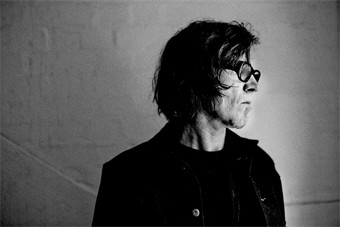
© Steve Gullick
Mark Lanegan began his music career as a founding member of Screaming Trees in 1984 and released his first solo album, The Winding Sheet, in 1990. On the break-up of Trees in 2000, he became a member of Queens of the Stone Age, and has also collaborated with Greg Dulli (as The Gutter Twins) and many others. Straight Songs of Sorrow, his twelfth solo album, is released by Rough Trade. Sing Backwards and Weep is published in hardback, eBook and audio download by White Rabbit.
Read more
marklanegan.com
@marklanegan
@WhiteRabbitBks
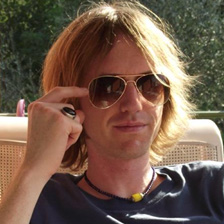 Brett Marie, also known as Mat Treiber, grew up in Montreal with an American father and a British mother and currently lives in Herefordshire. His short stories and other writing have appeared in publications including The New Plains Review, The Impressment Gang, PopMatters and Bookanista, where he is a contributing editor. He is currently redrafting his first novel The Upsetter Blog.
Brett Marie, also known as Mat Treiber, grew up in Montreal with an American father and a British mother and currently lives in Herefordshire. His short stories and other writing have appeared in publications including The New Plains Review, The Impressment Gang, PopMatters and Bookanista, where he is a contributing editor. He is currently redrafting his first novel The Upsetter Blog.
Facebook: Brett Marie
@brettmarie1979

